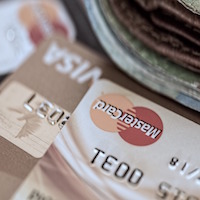How to improve your Cash Conversion Cycle part II
| 14-09-2016 | Olivier Werlingshoff |
 In my earlier article I wrote about how cash management can improve your cash conversion cycle and more specific the DSO. In this article I will focus on the DIO (Days Inventory Outstanding). This week I heard on the radio that successful retailers have a better DIO than other retailers. The trend to have your product made at low cost in the far East is changing. Companies tried to buy all their trade goods as cheap as possible and to reach this goal buying large quantities at a time was the best option.
In my earlier article I wrote about how cash management can improve your cash conversion cycle and more specific the DSO. In this article I will focus on the DIO (Days Inventory Outstanding). This week I heard on the radio that successful retailers have a better DIO than other retailers. The trend to have your product made at low cost in the far East is changing. Companies tried to buy all their trade goods as cheap as possible and to reach this goal buying large quantities at a time was the best option.
What you see nowadays is that the demand of goods is changing very fast. What was “in” a month ago can already have changed. The problem you will have with a large quantity of goods is that it has to be stored and because of the change in demand it will be a problem to sell them for the price your calculations where based on.
This is what happened with a few fashion retailers. A large quantity of fashion products, enormous storing cost and because the production was made in the far East it wasn’t possible to be flexible when de demand of goods changed.
Retailers who are more successful, are looking for possibilities to be very flexible with their sourcing and look for opportunities to buy smaller quantities, which are made closer to their business. By doing so they are better prepared for a demand change. They will have lower storage cost and can change their products more than two times a year.
What is the role of the treasurer in all this?
In my opinion the treasurer has to overview the total cash conversion cycle and has to show the company (sales- and procurement department) what the financial consequences are of enlarging the cycle. A second role is that the treasurer can compare the cash conversion cycle with their competitors and also discuss this information with colleagues and the CFO.
Owner of WERFIAD







